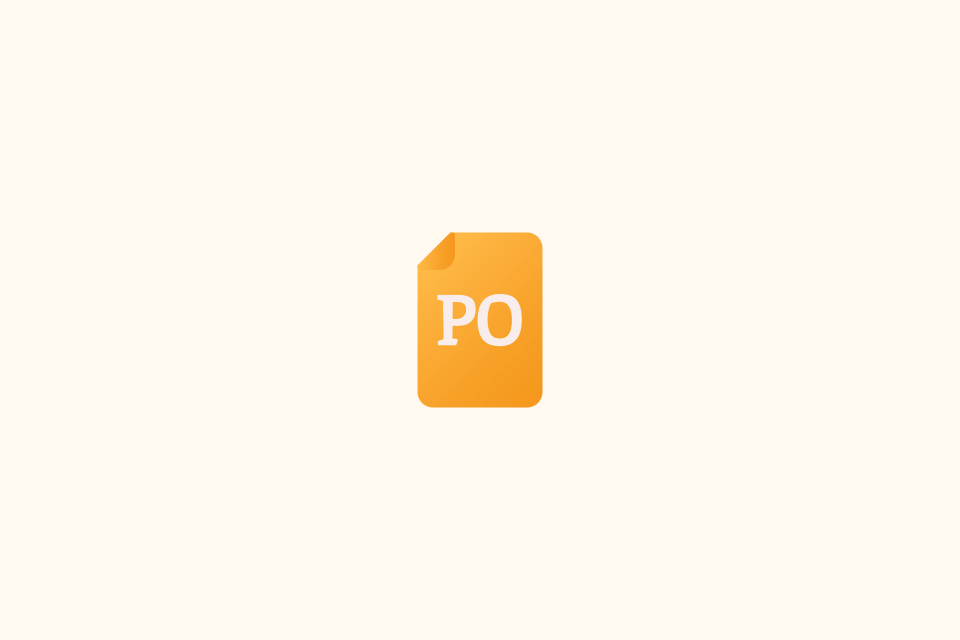Translation for E-commerce: A Complete Business Guide

TABLE OF CONTENTS
The global e-commerce market reached $6.2 trillion in 2024, with cross-border sales accounting for over 22% of total online transactions. Yet 72% of consumers prefer to buy products with information in their native language, and 56% say language is more important than price when making purchase decisions.
Poor translation can devastate international expansion efforts. A single mistranslated product description can result in confused customers, negative reviews, and legal complications that cost thousands of dollars to resolve. This comprehensive guide provides proven strategies to avoid these pitfalls while maximizing your international revenue potential.
Product Description Translation Strategy
Your product descriptions are your digital salespeople. They must persuade, inform, and convert—all while maintaining cultural relevance and search visibility in each target market.
SEO-Optimized Title Translation
Don’t simply translate your English product titles word-for-word. Research how customers in each market actually search for your products:
Wrong approach: “Premium Organic Dog Food” → German: “Premium Bio Hundefutter” Better approach: Research shows Germans search “Hochwertiges Hundefutter Bio” (high-quality organic dog food)
Action steps:
- Use Google Keyword Planner for each target market
- Analyze competitor product titles in local languages
- Include local search terms while maintaining brand consistency
- Test different variations and monitor organic traffic
Feature vs. Benefit Cultural Adaptation
Technical features resonate differently across cultures. Americans love specifications; Europeans prefer quality certifications; Asians value brand heritage.
Example: Bluetooth Speaker
- US audience: “40-hour battery life, IPX7 waterproof rating, 360-degree sound”
- German audience: “TÜV-certified quality, energy-efficient design, premium German engineering”
- Japanese audience: “Trusted by professionals, refined acoustic precision, minimalist aesthetic”
Technical Specifications Localization
Convert all measurements, certifications, and standards to local equivalents:
Essential conversions:
- Measurements: Imperial to metric (and vice versa)
- Electrical: Voltage, plug types, energy ratings
- Certifications: CE, FCC, JIS standards
- Sizing: US/UK/EU/Asian size charts with conversion guides
Pro tip: Always include both measurements: “5 feet (1.5 meters)” to accommodate both systems.
Customer Review Management
Customer reviews significantly impact purchase decisions, but managing multilingual reviews presents unique challenges.
Review Translation Accuracy
Automated review translation often fails to capture emotional nuances or cultural context:
Common problems:
- Sarcasm translated as genuine praise
- Cultural references lost in translation
- Emotional intensity levels misrepresented
- Technical terminology mistranslated
Solution strategy:
- Use human reviewers for reviews with extreme ratings (1-2 stars, 5 stars)
- Implement context-aware translation for product-specific terminology
- Flag reviews with cultural idioms for manual review
- Maintain original language versions alongside translations
Negative Review Cultural Sensitivity
Negative reviews require culturally appropriate responses:
Western markets: Direct, solution-focused responses work well Asian markets: Face-saving approaches with formal apologies Latin markets: Personal, relationship-building responses Nordic markets: Factual, transparent communication
Fake Review Detection Across Languages
Fraudulent reviews often exhibit linguistic patterns that vary by language:
Red flags by market:
- English: Overly generic superlatives, unnatural grammar patterns
- Spanish: Inconsistent regional dialects within single reviews
- Chinese: Simplified characters used where traditional expected
- German: Unnatural compound word formations
Multilingual Customer Service Setup
Effective customer service translation goes beyond language—it requires cultural competency and technical integration.
Pre-translated FAQ Templates
Create comprehensive FAQ databases in each target language, covering:
Essential categories:
- Shipping and delivery timelines by region
- Return and refund policies (vary by local law)
- Product warranty terms and conditions
- Payment methods and currency questions
- Size guides and fitting instructions
Template structure:
Question: [Localized question in natural phrasing]
Answer: [Culturally appropriate response]
Follow-up links: [Region-specific resources]
Escalation: [Local language contact options]Chatbot Multilingual Configuration
Modern chatbots can handle basic inquiries in multiple languages, but setup requires careful planning:
Technical requirements:
- Language detection accuracy (minimum 95%)
- Fallback to human agents when confidence drops below 80%
- Context preservation across language switches
- Integration with local payment and shipping systems
Cultural customization:
- Greeting styles (formal vs. casual by market)
- Communication pace (direct vs. relationship-building)
- Escalation triggers (vary by cultural communication styles)
Cultural Communication Standards
Customer service tone and approach must align with local expectations:
Germany: Formal, precise, solution-focused
- Use “Sie” (formal you), provide detailed explanations
- Include relevant regulations and warranty information
Japan: Highly formal, apologetic, face-saving
- Multiple apologies, even for customer errors
- Offer alternatives rather than direct refusals
United States: Friendly, efficient, empowering
- Use customer’s name frequently
- Emphasize quick resolution and convenience
Brazil: Personal, warm, relationship-oriented
- Show personal interest in customer satisfaction
- Use emotional language appropriately
Legal and Compliance Translation
Legal translation errors can result in regulatory fines, lawsuits, and market access restrictions. These documents require absolute accuracy.
Privacy Policy GDPR Compliance
European markets require specific language around data collection and user rights:
Mandatory elements for EU markets:
- Legal basis for data processing (clearly stated)
- Data retention periods (specific timeframes)
- User rights explanation (access, rectification, erasure)
- Contact information for Data Protection Officer
- Cookie consent mechanisms
Translation considerations:
- Legal terminology must match official EU translations
- Rights descriptions must be actionable, not vague
- Contact methods must be accessible from each EU country
Terms of Service Regional Adaptation
Service terms must comply with local consumer protection laws:
United States: Arbitration clauses, liability limitations European Union: Cooling-off periods, unfair contract terms protection Australia: Australian Consumer Law protections Canada: Provincial consumer protection variations
Critical elements requiring legal review:
- Dispute resolution procedures
- Liability and warranty limitations
- Automatic renewal terms
- Cancellation and refund policies
Tax and Customs Declarations
International shipping requires accurate customs documentation:
Product classification: HS codes must match local customs databases Value declarations: Must comply with local currency and valuation rules Restricted items: Lists vary significantly by destination country Documentation language: Some countries require native language customs forms
Platform-Specific Implementation
Each e-commerce platform has unique multilingual capabilities and limitations.
Shopify Multilingual Setup
Shopify’s native multilingual features (Shopify Markets) provide solid foundation:
Built-in capabilities:
- Automatic currency conversion
- Regional shipping calculations
- Tax compliance for major markets
- Basic translation management
Enhanced setup recommendations:
- Install dedicated translation apps (Langify, Weglot, or Transcy)
- Configure separate domains or subdomains for major markets
- Set up region-specific payment methods
- Implement hreflang tags for SEO
Cost consideration: Shopify Plus required for advanced international features ($2,000+/month)
WooCommerce Translation Workflow
WooCommerce offers more flexibility but requires more technical setup:
Essential plugins:
- WPML ($99/year): Most comprehensive translation management
- Polylang (Free): Good for basic multilingual setup
- TranslatePress ($89/year): Visual translation interface
Technical requirements:
- Multisite setup for complex international operations
- CDN configuration for global performance
- Currency switching plugins
- Regional shipping plugins
Development considerations: Custom theme modifications often needed for optimal multilingual experience.
Amazon Global Selling Requirements
Amazon’s international marketplace requirements vary significantly:
Language requirements by marketplace:
- Amazon.de: German mandatory, English acceptable for B2B
- Amazon.jp: Japanese required, English for certain categories
- Amazon.fr: French required by law for consumer products
- Amazon.es: Spanish required, regional variations important
Listing optimization:
- Keyword research per marketplace using Amazon’s tools
- Cultural adaptation of bullet points and descriptions
- Local competitor analysis for pricing and positioning
- Review management in native languages
Pricing and Currency Considerations
International pricing involves more than currency conversion—it requires strategic market positioning.
Dynamic Pricing Translation Management
Price changes must propagate across all language versions simultaneously:
Technical setup:
- Centralized pricing database with real-time currency conversion
- Regional pricing rules (psychological pricing points vary by culture)
- Tax-inclusive vs. tax-exclusive display by market requirements
- Promotional pricing coordination across time zones
Cultural pricing considerations:
- China: Numbers ending in 8 (lucky) preferred over 4 (unlucky)
- Germany: Precise pricing (€19.99) less effective than round numbers (€20.00)
- United States: $X.99 pricing psychology widely accepted
- Scandinavia: High prices associated with quality; competitive pricing less important
Currency Display and Conversion
Accurate currency handling prevents abandoned carts and customer confusion:
Technical requirements:
- Real-time exchange rates (update hourly minimum)
- Local currency symbols and formatting
- Rounding rules compliance with local practices
- Multi-currency checkout capability
Display standards by region:
- United States: $1,234.56 (dollar sign before, comma thousands separator)
- Germany: 1.234,56 € (euro sign after, period thousands separator)
- India: ₹1,23,456.78 (unique number grouping system)
- Japan: ¥123,456 (no decimal places for yen)
Cost-Benefit Analysis Framework
Calculate the true ROI of e-commerce translation investments with this comprehensive framework.
Translation Investment Calculator
Initial setup costs:
- Platform multilingual features: $100-$2,000/month
- Professional translation: $0.08-$0.25/word
- Legal document review: $150-$400/hour
- Technical implementation: $2,000-$15,000
Ongoing maintenance costs:
- Content updates: 20% of original translation cost annually
- Customer service training: $500-$2,000/employee
- Legal compliance monitoring: $200-$800/month/market
- Quality assurance: $300-$1,000/month
Revenue impact calculation:
ROI = (Additional Revenue from International Markets - Translation Costs) / Translation Costs × 100
Example calculation:
- Investment: $25,000 initial + $8,000 annual
- Additional revenue: $180,000 annually
- ROI: ($180,000 - $8,000) / $33,000 = 521%Market Entry Cost Analysis
Tier 1 markets (English-speaking): $5,000-$15,000 investment
- Minimal translation required
- Familiar legal frameworks
- Established payment systems
Tier 2 markets (European, developed Asian): $15,000-$40,000 investment
- Comprehensive translation needed
- Moderate legal complexity
- Currency and payment setup required
Tier 3 markets (Emerging): $25,000-$60,000 investment
- Extensive localization required
- Complex legal compliance
- Custom payment and logistics solutions
Break-even Analysis by Market
Typical timeline to profitability:
- Canada/Australia: 3-6 months
- Western Europe: 6-12 months
- Japan/South Korea: 12-18 months
- Latin America: 18-24 months
- Southeast Asia: 24-36 months
Common Pitfalls and Prevention Strategies
Learn from others’ expensive mistakes with these real-world examples and prevention strategies.
Cultural Misunderstanding Case Studies
Case 1: Color Symbolism Failure A luxury jewelry brand used white packaging for Chinese New Year promotions. White symbolizes mourning in Chinese culture, resulting in 67% lower conversion rates and negative social media backlash.
Prevention: Research color, number, and cultural symbolism before visual design
Case 2: Religious Sensitivity Oversight A food delivery app promoted “quick Friday delivery” during Ramadan in Muslim markets, showing insensitivity to fasting practices.
Prevention: Maintain cultural calendar awareness and local market consultation
Case 3: Legal Translation Error An electronics retailer’s warranty terms were mistranslated in German, creating unintended extended warranty obligations costing $340,000 in claims.
Prevention: Professional legal review for all terms, warranties, and policies
Technical Integration Problems
Common issues and solutions:
- Character encoding failures: Implement UTF-8 throughout entire system
- Text expansion problems: Design UI with 30% text expansion buffer
- Currency rounding errors: Use proper financial calculation libraries
- Date format confusion: Always specify format clearly in documentation
Quality Control Checklist
Pre-launch verification:
- All currency conversions accurate and updating
- Legal documents reviewed by local legal counsel
- Customer service workflows tested in target languages
- Payment methods working for target markets
- Shipping calculations accurate for international destinations
- Tax calculations compliant with local requirements
- Website performance tested from target geographic locations
Professional E-commerce Translation Solutions
Managing multilingual e-commerce operations requires sophisticated translation tools that understand business context, maintain consistency, and integrate with your existing systems.
OpenL Doc Translator specializes in business document translation with features designed specifically for online retailers:
E-commerce optimizations:
- Product catalog batch translation with consistent terminology
- SEO-optimized content that maintains search visibility
- Format preservation for complex product specifications and tables
- Integration capabilities with major e-commerce platforms
- Quality assurance workflows for business-critical content
The platform’s AI understands commercial context, ensuring product descriptions maintain persuasive power while adapting to cultural preferences. For high-stakes legal documents and customer communications, human expert review ensures compliance and cultural appropriateness.
Implementation Action Plan
Start your international expansion with this proven phase-by-phase approach:
Phase 1 (Months 1-2): Foundation
- Audit existing content for translation readiness
- Research top 3 target markets for your products
- Set up basic multilingual infrastructure on your platform
- Translate core product catalogs for primary market
Phase 2 (Months 3-4): Market Entry
- Launch in primary international market
- Implement customer service capabilities
- Set up payment and shipping for target market
- Monitor performance and gather customer feedback
Phase 3 (Months 5-6): Optimization
- Expand to secondary markets based on Phase 2 results
- Optimize product descriptions based on search and conversion data
- Scale customer service operations
- Implement advanced features like dynamic pricing
Phase 4 (Months 7+): Growth
- Expand to additional markets with proven ROI
- Develop market-specific product lines
- Build local partnerships and distribution
- Invest in advanced localization features
Success in international e-commerce requires more than translation—it demands cultural understanding, legal compliance, and technical excellence. With proper planning and execution, international markets can become your largest revenue growth driver.


